This article will discuss the speaker system, which remained the benchmark in both the studio and the home segment for a decade (years 1974 - 1986). Moreover, the variants of deep modernization of this AU were mass-produced right up to 1997. YAMAHA NS-1000M is one of the few speakers that has received recognition from both the picky audiophile press and sound technicians around the world.
According to the experts of the magazine “Stereophile”, the NS-1000M is the most popular high-end speakers in the twentieth century. Many music lovers and audio engineers believe that this speaker became the conceptual ancestor of the concept Hi End (meaning not the marketing term, which came into use some time later, but the idea of equipment that is far superior to Hi-Fi in fidelity playback).
Fruit of leadership ambitions
By the beginning-mid-70s, the products of the Japanese giants YAMAHA, Matsushita Electric and SONY had a reputation for being world leaders in the production of sound reproducing equipment. We can safely say that until the early 80s, it was these corporations that divided the market of household and studio electronics among themselves (unless, of course, taking into account microphones and headphones, where the German Sennheiser reigned almost completely).
Realizing the need for a fundamentally new device, Japanese engineers are beginning a tireless and frantic search for technical solutions for the new concept. It should be noted that there were objective reasons for creating more advanced acoustic systems. So, by this time, analog recording and information devices had reached the peak of their development; in the future, their capabilities remained almost unchanged, only the circuit design and design were optimized.
The technical level of records has increased significantly. In this regard, there is a need for a fundamentally new acoustics for studios. The requirements for the fidelity of reproduction among music lovers have naturally grown, which has created the need for home-made high-quality sound.
By 1972, 1973, these processes led to the fact that the need for a new AU class, which would unite the achievements of previous generations and give the user the desired fidelity to play without appeals and compromises, became obvious. So ultimatum concepts claiming to be the best of the masterpieces of column-construction are born.
In 1973, Matsushita completed the development and launched the Technics SB-1000 series.
The less well-known analogue from SONY SS-7200, which is also positioned as a “breakthrough” and “new Japanese word” in acoustics, is not long in coming. YAMAHA, on the contrary, is somewhat delayed in development, but as a result, by 1974, the immortal NS-1000 bestseller is being released, which almost instantly, without significant marketing investments, conquers an audience of experienced music lovers and recording studio workers. The start of sales starts at 290,000 yen (equivalent to $ 4022 today, adjusted for inflation).
Fight frequency accents
In the 60s, a period of experimentation was completed, and each major manufacturer of the AU created new products with characteristic conceptual differences. For the new flagship speakers, one of such differences was the characteristic features of the sound, which later became the canonical standard.
In contrast to the not too reliable, but impressive deepening of the low-frequency spectrum in Technics and sticking out the vocal middle of SONY, YAMAHA experts decided to make the most even, so-called. monitor frequency response, as well as thoroughly worked with improving the quality of the upper and middle.
To reduce distortion at MF and HF, the company first used metallic beryllium drivers. It was the YAMAHA technologists who first understood how to process this capricious metal and applied it when creating field-effect transistors and dynamic loudspeakers. For this purpose, the technology of vacuum deposition, sprayed beryllium, developed by the company’s engineers, was used.
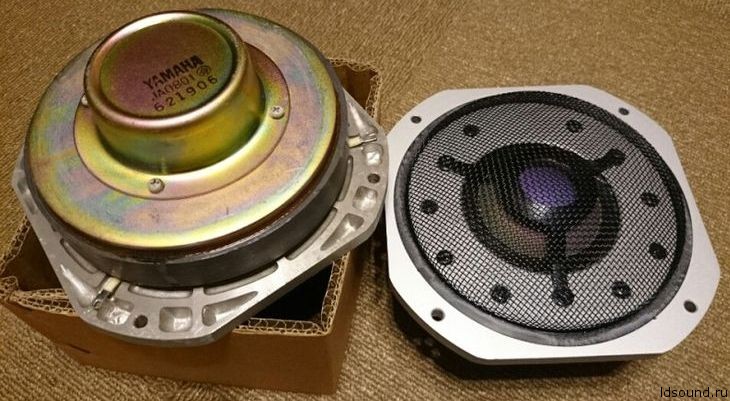
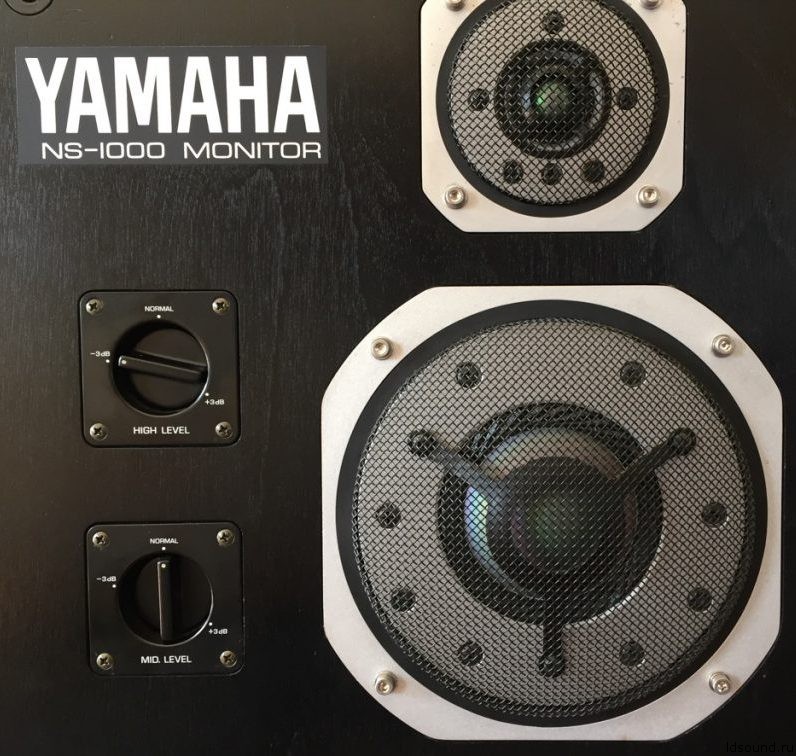 Beryllium RF and Mid Drivers NS-1000
Beryllium RF and Mid Drivers NS-1000The properties of beryllium, which prompted it to be used to create speakers, is a combination of low mass stiffness, also an unsurpassed emissivity.

Special features
The vast majority of technical solutions that were used in this speaker were designed to obtain maximum fidelity. As an acoustic arrangement, sacrificing some of the volume, but reducing the likelihood of parasitic resonances, a closed box was chosen.
The body of the device was made of thick (3 cm) plywood (different types of wood depending on the modification), while, despite the relatively large volume (50 l), it had a small mass (from 38 to 31 kg for each of the modifications). The use of thick walls, an impressive layer of a felt damper and a tight fit of the case with mineral wool made it possible to minimize the possible parasitic resonances. Depending on the version, the case is covered with urethane paint or thick lacquer, which causes associations with the grand pianos of YAMAHA.
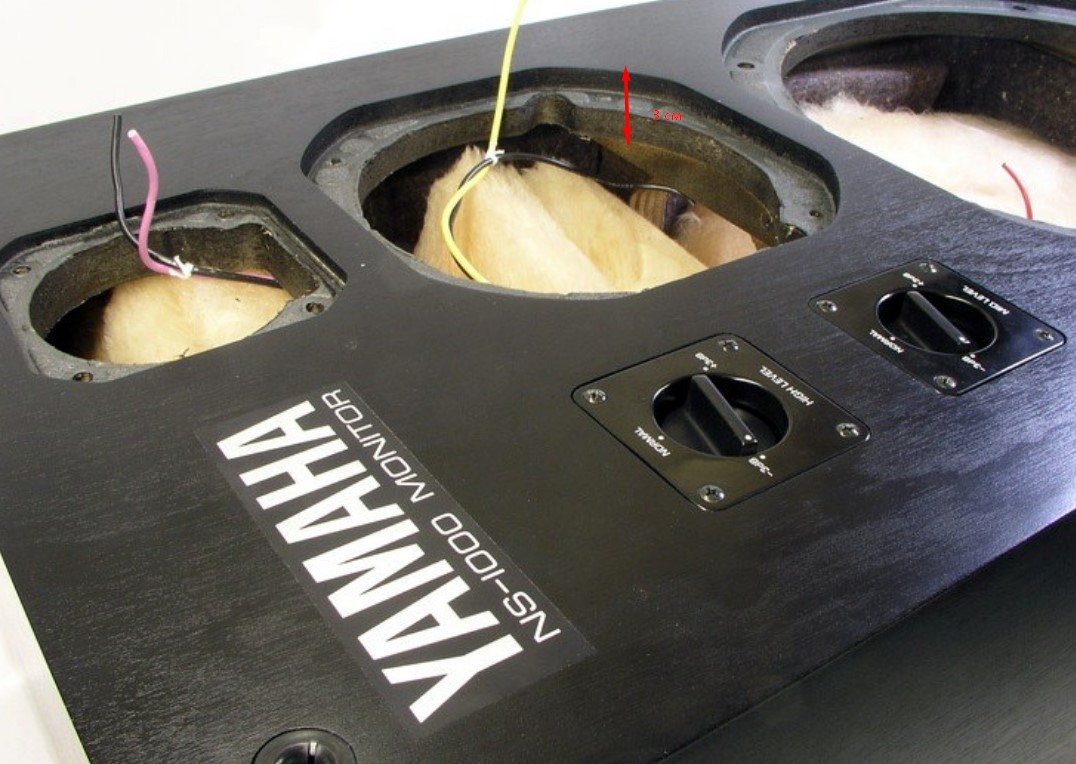
Simultaneously with the main model, a studio-professional version of the NS-1000M (monitor) appears. The modification differs even more even frequency response due to the use of another woofer. In the NS-1000, the JA-3058 was used with more “colored”, “saturated” (we read between the lines: with a more hunchbacked frequency response); for the monitor version 1000M, the “cold” and “passionless” JA-3058A were used with absolutely neutral amplitude-frequency indices .
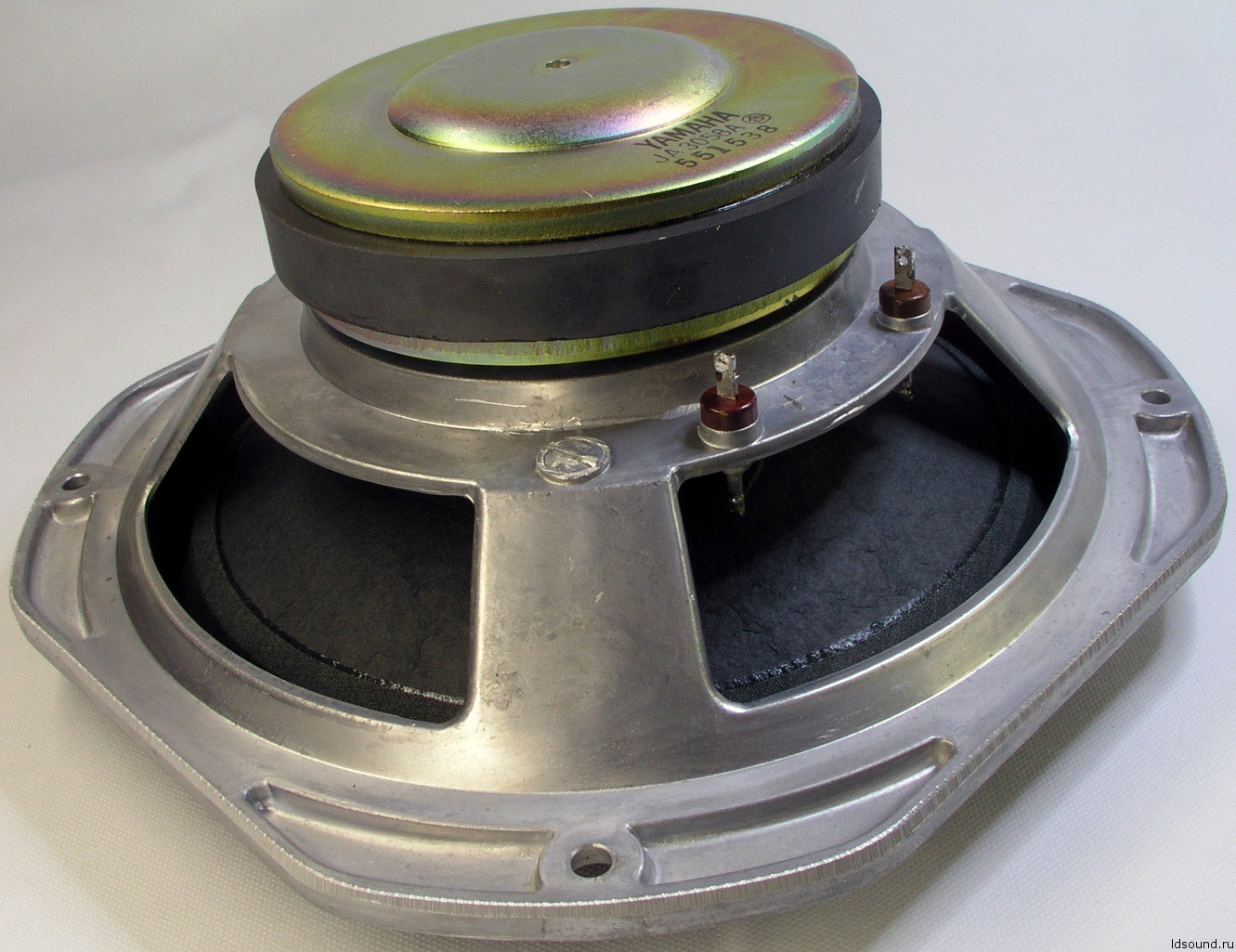
Also for the monitor version some changes were made to the filter (crossover), in particular, another coil was used. The task of these changes was to obtain even higher fidelity playback.
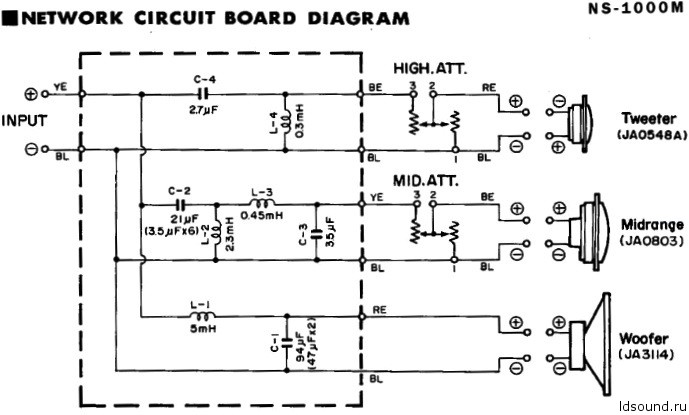

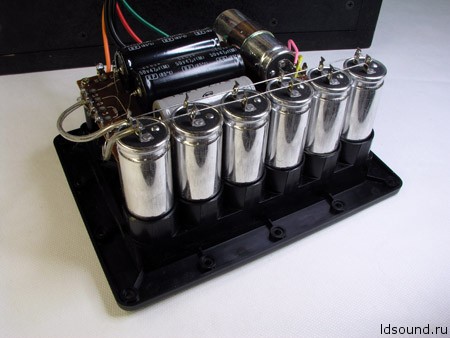
But the most significant difference between the monitor version and the home version was the paintwork. It did not carry a significant acoustic load, but the aesthetically pleasing home option was more luxurious, and besides, significantly more steady wear. The luxury and durability of urethane paint cost users more than 8 pounds extra weight and almost a third of the cost.
 "Rich decor" NS-1000 for 290,000 yen
"Rich decor" NS-1000 for 290,000 yenTechnical and other characteristics of the device were comparable with existing at that time counterparts and sometimes surpassed the flagships of the main competitors:
- Frequency response: 40Hz - 20.000Hz
- Crossover frequency: 500Hz, 6kHz
- Lower resonant frequency: 40Hz
- Sensitivity: 90 dB
- Power rating: 50 W
- RMS: 100W
- Impedance: 8 ohm
- Dimensions: 375 x 675 x 326 mm
- Weight: 31 kg (NS-1000) / 39 kg (NS-1000M)

Progress
We can safely say that only budget samples can be competitors of this model in popularity, in its price segment it was the most in demand over the past 30 years of the last century. Even considering the fabulous cost - 216,000 (for the NS-1000M - $ 2,993), the monitor version of the YAMAHA speakers in 1976 went around the sales of monitors from Matsushita, SONY in Japan and Tandberg, Celestion, Bang & Olufsen and Bowers & Wilkins in Europe .
This was largely due to an order for 1000 copies from the Swedish state television and radio broadcasting corporation, where the model became the official monitor of the company. After another 2 years, the Finnish national television company followed the example of its neighbors and ordered 200 NS-1000M units.
Interestingly, the conservative European audio market warmly welcomed the Japanese novelty and the prudent Western European press, which, as it were, did not notice the Japanese manufacturers until the mid-80s, made an exception for these YAMAHA monitors.
The NS-1000M model transferred several reprints, in 1992 with an updated design it was released in a large series called NS-2000, after 4 years interest in it reappeared and it was once again launched into a series in a modernized version called NS-1000X. The release of the AU, which can be considered the successors of the NS-1000 concept, continues to this day - these are the NS-5000, which, according to YAMAHA experts, will be no less popular than their legendary predecessors.
NS-5000The magazine “Stereophile” included the NS-1000M in its honorary TOP-100 best acoustic systems.
Total
The engineers who designed this acoustics probably understood that they were creating a masterpiece. But, I suppose, they could hardly imagine that it was their brainchild to become one of the most serious long-livers in the modern market of acoustic systems.
Jeans
Our
catalog contains a variety
of high fidelity
loudspeakers , in particular, direct descendants of the legendary NS-1000M -
NS-5000Used photocontent ldsound.ru